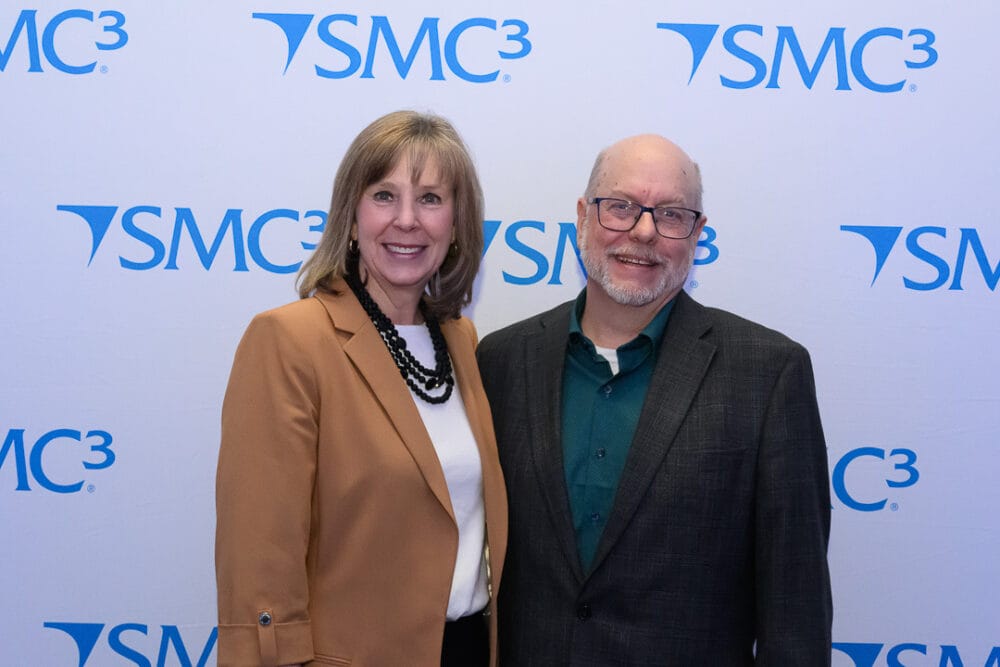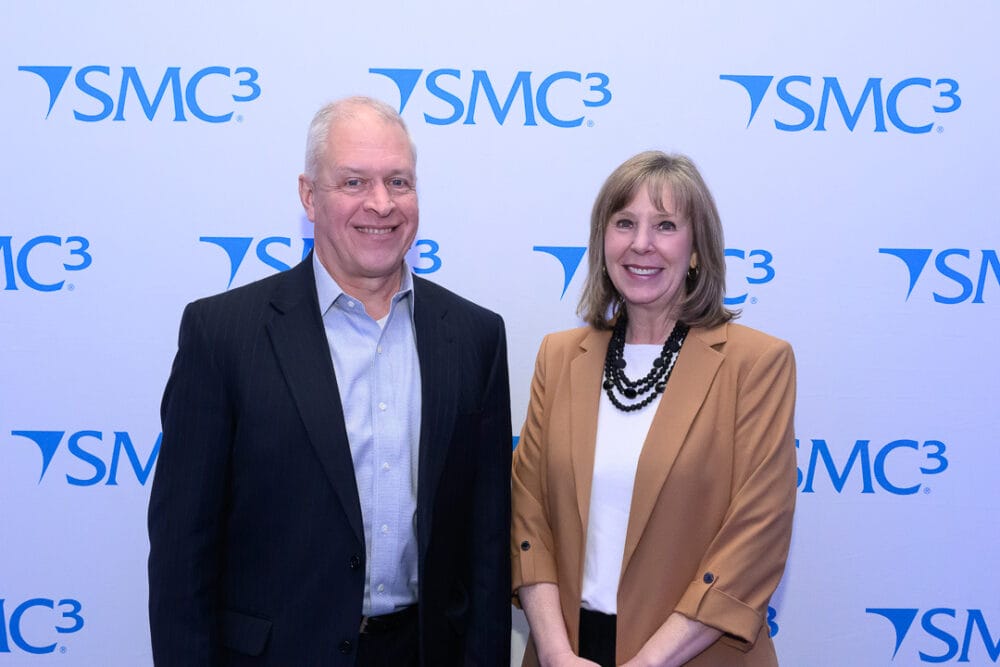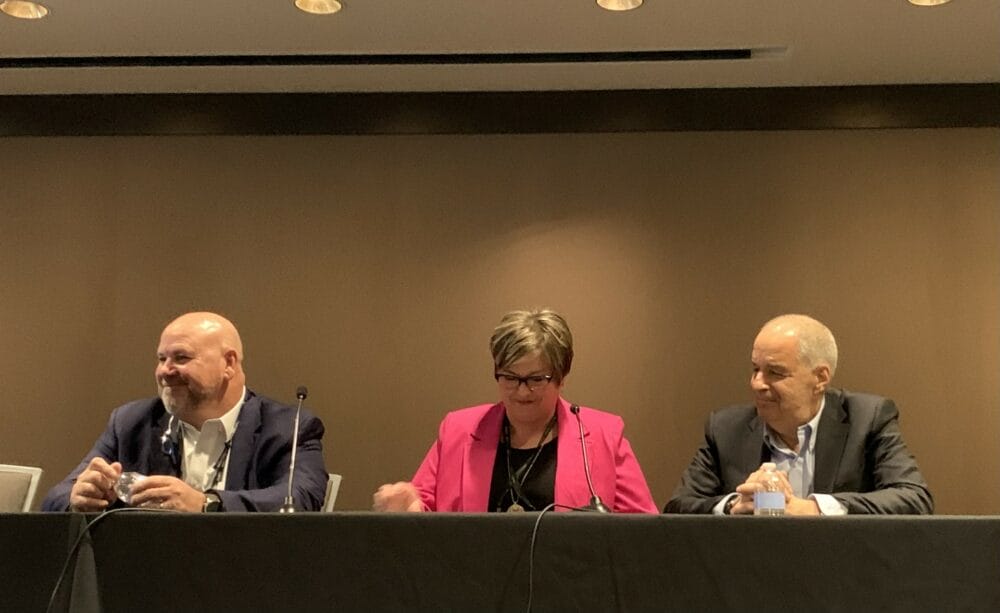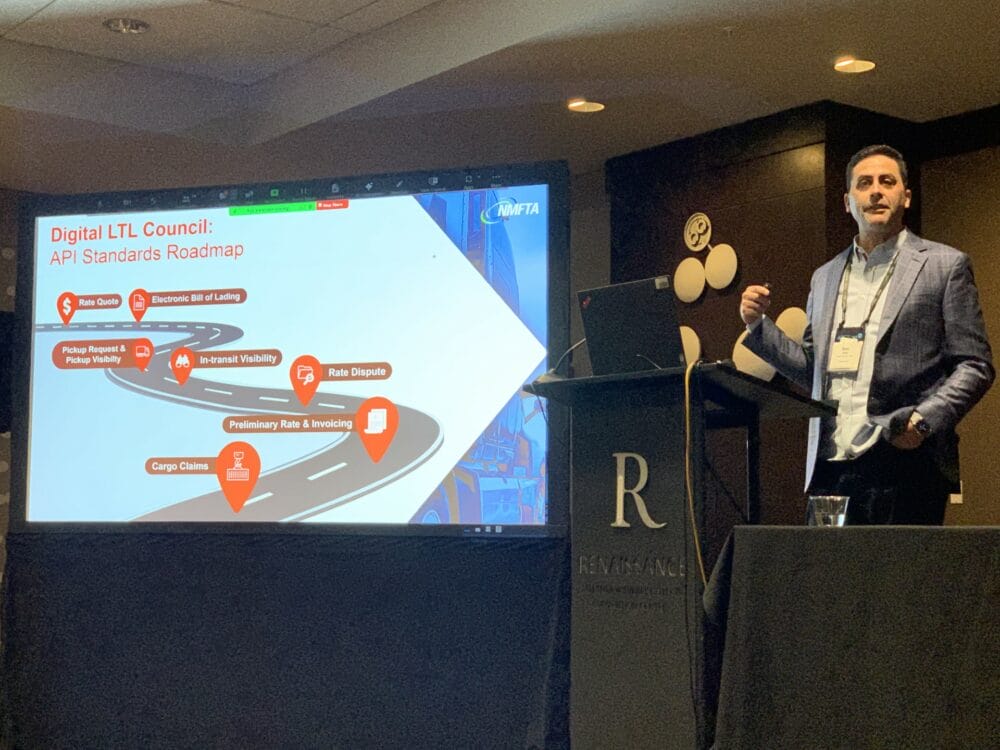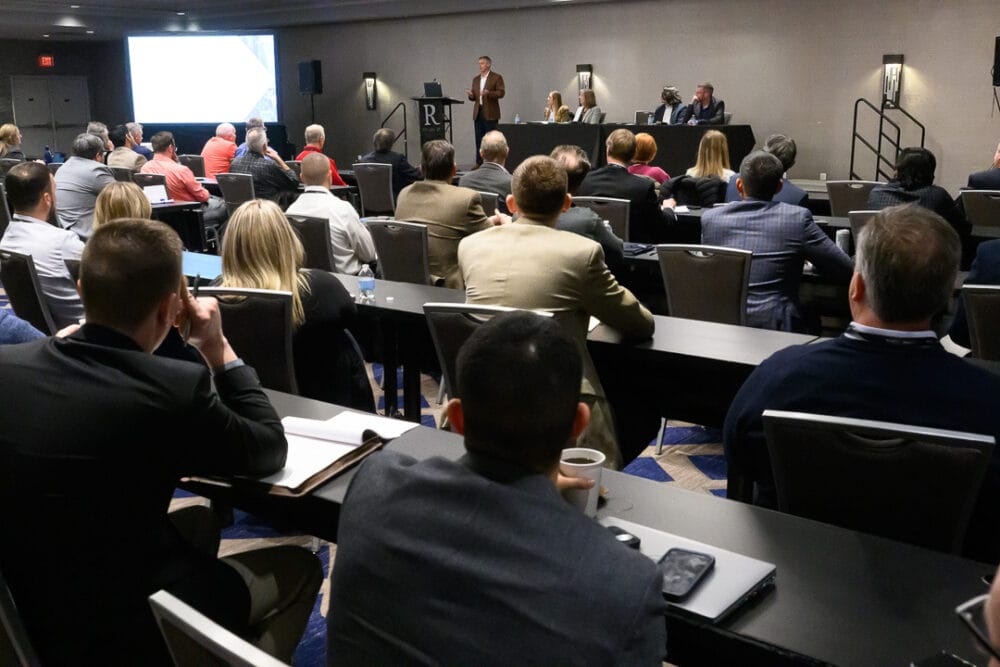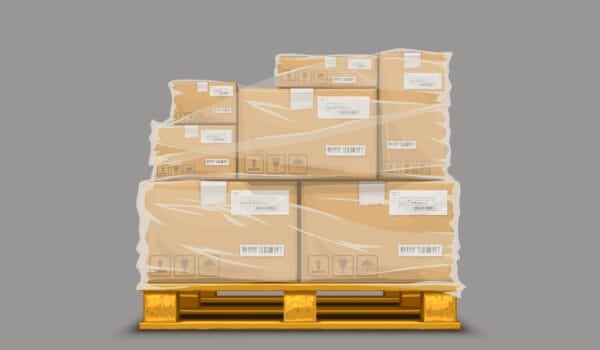SMC³ Jump Start 2024 conference offered attendees numerous chances to hear from the National Motor Freight Traffic Association, Inc. (NMFTA)™ staff and those affiliated with the association.
Attendees left the conference with a better understanding of NMFTA, its products, services, and the direction of the association.
Here’s a breakdown of those sessions:
Monday, January 22: 1:15-2:00 pm ET
Jump Start Leadership Series: In the Fast Lane with NMFTA’s Debbie Sparks
Debbie Sparks, executive director at NMFTA, joined Bill Cassidy, senior editor at the Journal of Commerce, for an exclusive one-on-one discussion. They talked trends, challenges, and opportunities driving trucking and the next-generation supply chain.
Sparks shared what leadership has meant for her in taking the helm at the nonprofit that has been known as a standard setting organization but is so much more than that. She shared that although NMFTA has been a cornerstone of the less-than-truckload (LTL) industry since 1956, she knew she had to evolve the organization beyond its traditional freight classification function and move into digital standards and cybersecurity.
Prioritizing NMFTA’s future, Sparks emphasized the need for strong board relations, transparent communication, and embracing diverse viewpoints across the organization.
Through member and board dialogue, Sparks pinpointed four pillars—cybersecurity, digitization, marketing, and classification—to drive NMFTA’s member value.
Embracing these new focuses, Sparks described the transformations necessary for NMFTA’s success.
“You’ve got to ask hard questions,” she shared with Cassidy. “You’ve got to be willing to hear the hard answers, and then you’ve got to put a plan in place to deliver upon it.”
Monday, January 22: 4:45-6:15 pm ET
Digital LTL Council Meeting
The in-person membership meeting provided three offerings to council members and guests alike:
eBOL Adoption Update by Paul Dugent, NMFTA Digital LTL Council Executive Director
Attendees were the first to hear about the latest updates on the eBOL adoption progress and ways to advance adoption in the industry.
Dugent shared the total number of carriers that have adopted the eBOL standard represent 57% of industry revenue. Those carriers that have pledged but not yet adopted represent 13% of industry revenue for a total of 70%.
In total, the Council has 218 members comprised of LTL carriers, logistics service providers, shippers, and technology providers.
He shared a list of 9 benefits of digital APIs that carriers, 3PLS, and shippers can take advantage of by adopting.
Dugent then highlighted workshop contributors in the following active groups: eBOL, Pickup Request/Visibility, In Transit Visibility, and Preliminary Freight Charges.
API Roadmap & Workshop Activity Review by Sam Ralat, Estes Express Lines Director of Customer Success
Attendees heard from Council member Ralat as he explored what’s next on the industry’s API standards roadmap and addressed progress on eBOL, Pickup Request/Visibility, In Transit Visibility, and Preliminary Freight Charge.
Sam did a deep dive into the progress made by the API workshops, with a focus on the Pickup Request/ Pickup Visibility workshop. He explored what’s next on the industry’s API roadmap and what it means for participating Council members and those who have adopted the eBOL standard.
He shared new eBOL API methods, requested changes, and response changes, as well as updates to the NMFTA website such as a set of Frequently Asked Questions section.
He encouraged those in the room to get involved in the Council and workshops to help the industry on its path to greater visibility.
“From Skepticism to Success: Overcoming Challenges in eBOL Implementation” Panel Discussion
Attendees heard the latest updates on the eBOL adoption progress, API roadmap and activity updates, and a fruitful panel discussion from their peers from C.H. Robinson, Uline, and PITT OHIO:
Panelists were:
- Jenny Johnson, C.H. Robinson Operations Manager
- Geoff Muessig, PITT OHIO Chief Marketing Officer and Executive VP and DLC Chairman
- Brian Thompson, SMC³ Chief Commercial Officer (moderator)
- Angelo Ventrone, Uline Vice President of Logistics
Johnson shared with attendees that as of Monday, NMFTA and C.H. Robinson issued an insightful case study about the adoption process, the importance of implementing the eBOL standard, and more.
The study shared that in the past year, 17,240 C.H. Robinson customers benefited from the eBOL and even more will in 2024 as C.H. Robinson helps additional LTL carriers come on board.
A copy of the meeting PowerPoint presentation can be found here.
The Zoom webinar recording can be found here.
Tuesday, January 23: 3:00-3:45 pm ET
NMFC: The Future of Freight Classification Panel
Attendees received an informative update from National Motor Freight Classification (NMFC)® experts:
- Clete Cordero, NMFTA Vice Chairman and Southeastern Freight Lines Vice President of Pricing and Traffic
- Lesley Veldstra Killingsworth, NMFTA Chairwoman and Polaris Transportation Group Vice President of Pricing and Market Strategy
- Adam Mercer, NMFTA Classification Development Manager and Freight Classification Development Council (FCDC) Member
- Joe Ohr, NMFTA Chief Operating Officer
- Debbie Sparks, NMFTA Executive Director
Killingsworth shared that in 2022, NMFTA’s Board of Directors gave the staff a directive: “How can we modernize the NMFC system?”
NMFTA’s Sparks shared that after deploying multiple surveys to participants – including carriers, shippers, and 3PLs – and having active conversations with users, NMFTA came to two conclusions: “the industry is diversified” and that the current classification system is “not keeping pace with the industry.”
The FCDC’s and NMFTA’s Mercer, shared with attendees that since 2023, the NMFC has undergone significant changes such as:
- 1,193 articles canceled
- 21 generic headings removed
So what’s on the “docket” for 2024?
- An increased focus on consolidation of generic headings
- Update research process
- Updates to the docket format
- Improved communication from the classification department.
NMFTA’s Ohr shared the advancement of the online tools and training for freight classing starting with three areas of focus:
- ClassIT infrastructure
- Dimensioners best practices group
- NMFTA seeks input on pain points from industry
ClassIT, which is the digital version of the NMFC book. It’s a pricing tool for motor carriers that helps evaluate and correctly classify types of commodities shipped. Think of it as an NMFC code lookup tool, freight calculator, and a tool for determining shipping costs or freight rates and correct freight class.
Today, NMFTA hosts over 7,000 users of ClassIT versus just under 700 printed NMFC books that are distributed throughout the year.
Given the ever-growing number of users, upgrades to the online database are imperative. Ohr shared the coming upgrades to ClassIT in an informative blog here.
Despite the substantial changes still underway for the NMFC system and ClassIT, Cordero couldn’t be more proud of the progress made to date.
“This is the first time I’ve seen collaboration like this take place,” he said. “We’re trying to change it for the betterment of our industry.”
Lastly, Cordero posed an overarching question to the attendees about the pace and speed of these changes: “We need to hear from you,” he said. “As we move classification toward density, and have a place for dimensioners, we need to establish cadence and a timeline so we leave no one behind.”
To access a copy of the PowerPoint presentation or to talk with NMFTA’s experts, connect with Marli Hall, NMFTA director of communications, at marli.hall@nmfta.org or 703-665-3559.

